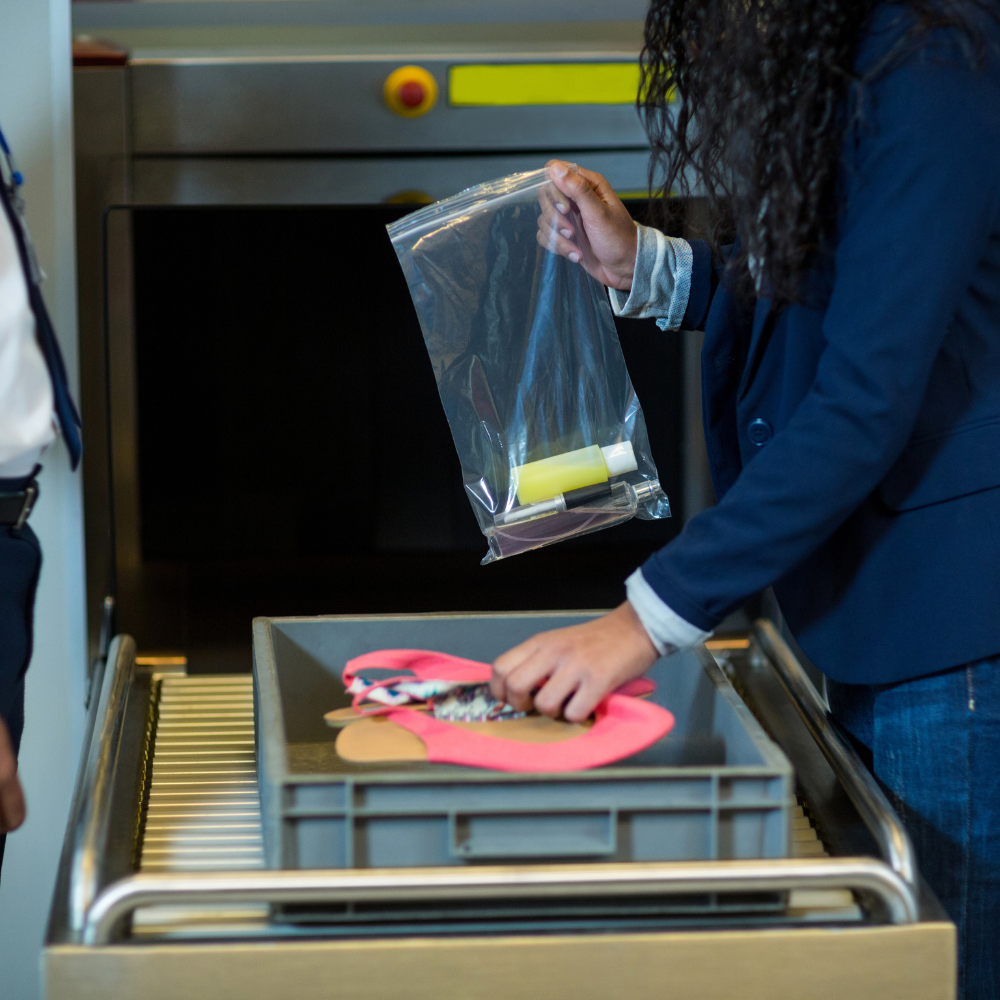 An American business has tested a technology that sends satellites into orbit using a fast-spinning motor. The device, which is propelled by kinetic energy, is designed to significantly lower the costs and fuel needed for conventional rocket launches. SpinLaunch is the name of the California-based business that created the system. Last week, it made a recent test launch announcement.
The launch occurred at Spaceport America, a private space launch facility in the western state of New Mexico, on September 27. The business claimed that many entities, including NASA, provided payloads for the experiments. All of the test payloads were successfully flown and retrieved, according to a statement from SpinLaunch. The payloads' contents were not specifically disclosed. The September testing, according to SpinLaunch, comprised the tenth since October 2021. Additionally, more than 150 partners, government representatives, and business supporters said they had seen the testing.
NASA and SpinLaunch have a contract for the development and testing of a cargo launch utilizing the company's system that was inked earlier this year. The deal was inked as part of the NASA Flight Opportunities Program. The program offers private businesses the ability to collaborate with NASA to test cutting-edge technologies that the space agency may use in its following space activities. NASA is considering collaborating with SpinLaunch to use the launch technology of the business to deploy future payloads. After the most recent tests, according to SpinLaunch, NASA worked with its team to document key launch characteristics of the kinetic launch system.
The 33-meter-tall steel tower that houses the electrically-driven spinning arm of the SpinLaunch Sub-Orbital Accelerator was used in the testing. In the accelerator, a rocket is put. To spin the rocket at a speed greater than five times the speed of sound, the system produces kinetic energy through its rapid spinning action. Built to launch the rocket into low-Earth orbit, the sub-orbital accelerator. Typically, this is thought to be at a height of 2,000 kilometers or more above the surface of the Earth. To be able to launch spacecraft into higher orbits, SpinLaunch intends to constantly upgrade its technology and apparatus. Most satellites, according to the business, can handle the high rotating speeds, however, some will need special adjustments to function with the system.
With the Sub-Orbital Accelerator, spacecraft might reach higher orbits without the use of a separate propulsion system. Officials from SpinLaunch claimed that tests of the technology have led to the recovery of the flight vehicles and the reuse of the rockets. SpinLaunch was founded by Jonathan Yaney, who also serves as its CEO. He said in a statement that both SpinLaunch engineers and the company's partners will find the most value in the most recent flight testing. To create a low-cost and environmentally friendly method of satellite deployment, he continued by saying that the company would keep striving to develop the technology.
Yaney said that the SpinLaunch mechanism and how it functions are far less complicated than conventional rocket launching systems. For both large and small businesses, this significantly lowers launch expenses. Furthermore, the absence of fuel required to launch items into low-Earth orbit reflects a method that is far more environmentally benign. As the need for satellite deployments continues to rise, the technology is being evaluated. The global small satellite market is expected to reach $3.68 billion in 2021, according to market research firm IMARC Group. By 2027, the organization anticipates the need to reach $8.84 billion.
An American business has tested a technology that sends satellites into orbit using a fast-spinning motor. The device, which is propelled by kinetic energy, is designed to significantly lower the costs and fuel needed for conventional rocket launches. SpinLaunch is the name of the California-based business that created the system. Last week, it made a recent test launch announcement.
The launch occurred at Spaceport America, a private space launch facility in the western state of New Mexico, on September 27. The business claimed that many entities, including NASA, provided payloads for the experiments. All of the test payloads were successfully flown and retrieved, according to a statement from SpinLaunch. The payloads' contents were not specifically disclosed. The September testing, according to SpinLaunch, comprised the tenth since October 2021. Additionally, more than 150 partners, government representatives, and business supporters said they had seen the testing.
NASA and SpinLaunch have a contract for the development and testing of a cargo launch utilizing the company's system that was inked earlier this year. The deal was inked as part of the NASA Flight Opportunities Program. The program offers private businesses the ability to collaborate with NASA to test cutting-edge technologies that the space agency may use in its following space activities. NASA is considering collaborating with SpinLaunch to use the launch technology of the business to deploy future payloads. After the most recent tests, according to SpinLaunch, NASA worked with its team to document key launch characteristics of the kinetic launch system.
The 33-meter-tall steel tower that houses the electrically-driven spinning arm of the SpinLaunch Sub-Orbital Accelerator was used in the testing. In the accelerator, a rocket is put. To spin the rocket at a speed greater than five times the speed of sound, the system produces kinetic energy through its rapid spinning action. Built to launch the rocket into low-Earth orbit, the sub-orbital accelerator. Typically, this is thought to be at a height of 2,000 kilometers or more above the surface of the Earth. To be able to launch spacecraft into higher orbits, SpinLaunch intends to constantly upgrade its technology and apparatus. Most satellites, according to the business, can handle the high rotating speeds, however, some will need special adjustments to function with the system.
With the Sub-Orbital Accelerator, spacecraft might reach higher orbits without the use of a separate propulsion system. Officials from SpinLaunch claimed that tests of the technology have led to the recovery of the flight vehicles and the reuse of the rockets. SpinLaunch was founded by Jonathan Yaney, who also serves as its CEO. He said in a statement that both SpinLaunch engineers and the company's partners will find the most value in the most recent flight testing. To create a low-cost and environmentally friendly method of satellite deployment, he continued by saying that the company would keep striving to develop the technology.
Yaney said that the SpinLaunch mechanism and how it functions are far less complicated than conventional rocket launching systems. For both large and small businesses, this significantly lowers launch expenses. Furthermore, the absence of fuel required to launch items into low-Earth orbit reflects a method that is far more environmentally benign. As the need for satellite deployments continues to rise, the technology is being evaluated. The global small satellite market is expected to reach $3.68 billion in 2021, according to market research firm IMARC Group. By 2027, the organization anticipates the need to reach $8.84 billion.
News In Focus
 Yash Ranjan10/10/202216
Yash Ranjan10/10/202216
'Spin launch' for satellites is a new technology being tested by a US company
 An American business has tested a technology that sends satellites into orbit using a fast-spinning motor. The device, which is propelled by kinetic energy, is designed to significantly lower the costs and fuel needed for conventional rocket launches. SpinLaunch is the name of the California-based business that created the system. Last week, it made a recent test launch announcement.
The launch occurred at Spaceport America, a private space launch facility in the western state of New Mexico, on September 27. The business claimed that many entities, including NASA, provided payloads for the experiments. All of the test payloads were successfully flown and retrieved, according to a statement from SpinLaunch. The payloads' contents were not specifically disclosed. The September testing, according to SpinLaunch, comprised the tenth since October 2021. Additionally, more than 150 partners, government representatives, and business supporters said they had seen the testing.
NASA and SpinLaunch have a contract for the development and testing of a cargo launch utilizing the company's system that was inked earlier this year. The deal was inked as part of the NASA Flight Opportunities Program. The program offers private businesses the ability to collaborate with NASA to test cutting-edge technologies that the space agency may use in its following space activities. NASA is considering collaborating with SpinLaunch to use the launch technology of the business to deploy future payloads. After the most recent tests, according to SpinLaunch, NASA worked with its team to document key launch characteristics of the kinetic launch system.
The 33-meter-tall steel tower that houses the electrically-driven spinning arm of the SpinLaunch Sub-Orbital Accelerator was used in the testing. In the accelerator, a rocket is put. To spin the rocket at a speed greater than five times the speed of sound, the system produces kinetic energy through its rapid spinning action. Built to launch the rocket into low-Earth orbit, the sub-orbital accelerator. Typically, this is thought to be at a height of 2,000 kilometers or more above the surface of the Earth. To be able to launch spacecraft into higher orbits, SpinLaunch intends to constantly upgrade its technology and apparatus. Most satellites, according to the business, can handle the high rotating speeds, however, some will need special adjustments to function with the system.
With the Sub-Orbital Accelerator, spacecraft might reach higher orbits without the use of a separate propulsion system. Officials from SpinLaunch claimed that tests of the technology have led to the recovery of the flight vehicles and the reuse of the rockets. SpinLaunch was founded by Jonathan Yaney, who also serves as its CEO. He said in a statement that both SpinLaunch engineers and the company's partners will find the most value in the most recent flight testing. To create a low-cost and environmentally friendly method of satellite deployment, he continued by saying that the company would keep striving to develop the technology.
Yaney said that the SpinLaunch mechanism and how it functions are far less complicated than conventional rocket launching systems. For both large and small businesses, this significantly lowers launch expenses. Furthermore, the absence of fuel required to launch items into low-Earth orbit reflects a method that is far more environmentally benign. As the need for satellite deployments continues to rise, the technology is being evaluated. The global small satellite market is expected to reach $3.68 billion in 2021, according to market research firm IMARC Group. By 2027, the organization anticipates the need to reach $8.84 billion.
An American business has tested a technology that sends satellites into orbit using a fast-spinning motor. The device, which is propelled by kinetic energy, is designed to significantly lower the costs and fuel needed for conventional rocket launches. SpinLaunch is the name of the California-based business that created the system. Last week, it made a recent test launch announcement.
The launch occurred at Spaceport America, a private space launch facility in the western state of New Mexico, on September 27. The business claimed that many entities, including NASA, provided payloads for the experiments. All of the test payloads were successfully flown and retrieved, according to a statement from SpinLaunch. The payloads' contents were not specifically disclosed. The September testing, according to SpinLaunch, comprised the tenth since October 2021. Additionally, more than 150 partners, government representatives, and business supporters said they had seen the testing.
NASA and SpinLaunch have a contract for the development and testing of a cargo launch utilizing the company's system that was inked earlier this year. The deal was inked as part of the NASA Flight Opportunities Program. The program offers private businesses the ability to collaborate with NASA to test cutting-edge technologies that the space agency may use in its following space activities. NASA is considering collaborating with SpinLaunch to use the launch technology of the business to deploy future payloads. After the most recent tests, according to SpinLaunch, NASA worked with its team to document key launch characteristics of the kinetic launch system.
The 33-meter-tall steel tower that houses the electrically-driven spinning arm of the SpinLaunch Sub-Orbital Accelerator was used in the testing. In the accelerator, a rocket is put. To spin the rocket at a speed greater than five times the speed of sound, the system produces kinetic energy through its rapid spinning action. Built to launch the rocket into low-Earth orbit, the sub-orbital accelerator. Typically, this is thought to be at a height of 2,000 kilometers or more above the surface of the Earth. To be able to launch spacecraft into higher orbits, SpinLaunch intends to constantly upgrade its technology and apparatus. Most satellites, according to the business, can handle the high rotating speeds, however, some will need special adjustments to function with the system.
With the Sub-Orbital Accelerator, spacecraft might reach higher orbits without the use of a separate propulsion system. Officials from SpinLaunch claimed that tests of the technology have led to the recovery of the flight vehicles and the reuse of the rockets. SpinLaunch was founded by Jonathan Yaney, who also serves as its CEO. He said in a statement that both SpinLaunch engineers and the company's partners will find the most value in the most recent flight testing. To create a low-cost and environmentally friendly method of satellite deployment, he continued by saying that the company would keep striving to develop the technology.
Yaney said that the SpinLaunch mechanism and how it functions are far less complicated than conventional rocket launching systems. For both large and small businesses, this significantly lowers launch expenses. Furthermore, the absence of fuel required to launch items into low-Earth orbit reflects a method that is far more environmentally benign. As the need for satellite deployments continues to rise, the technology is being evaluated. The global small satellite market is expected to reach $3.68 billion in 2021, according to market research firm IMARC Group. By 2027, the organization anticipates the need to reach $8.84 billion. 


